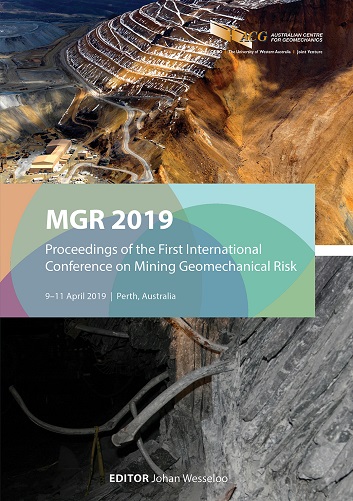Managing geohazard risk during mineral exploration at remote locations in rugged terrain and tropical environments

|
Authors: Whittall, J; Quinn, P; Lato, M; Porter, M; Bowden, B; Drew, J; Croaker, M |
DOI https://doi.org/10.36487/ACG_rep/1905_30_Lato
Cite As:
Whittall, J, Quinn, P, Lato, M, Porter, M, Bowden, B, Drew, J & Croaker, M 2019, 'Managing geohazard risk during mineral exploration at remote locations in rugged terrain and tropical environments', in J Wesseloo (ed.), MGR 2019: Proceedings of the First International Conference on Mining Geomechanical Risk, Australian Centre for Geomechanics, Perth, pp. 493-504, https://doi.org/10.36487/ACG_rep/1905_30_Lato
Abstract:
Mineral exploration projects in tropical environments can be exposed to a range of geohazards, including landslide, rockfall, debris flow, flooding, and subsidence. Understanding the geohazard types present, and their potential consequences at a proposed drill pad or camp site, is critical to managing the project’s geohazard risks. During the early stages of exploration, typical datasets used to map and evaluate geohazards, such as stereo airphotos and airborne LiDAR data, are often not available; as a result, engineers and geologists must rely on reconnaissance-level desktop studies and field observations of the geomorphology to estimate the risk of geohazard exposure. In order to effectively estimate geohazard risk at individual sites in a systematic manner, an evidence-based system was developed employing a standard risk equation. The components of the field-based geohazard risk assessment system include identifying the geohazard type and estimating the annual probability of occurrence at a specific location, estimating the spatial probability of the geohazard reaching the elements at risk, estimating the vulnerability of the elements at risk to the geohazard, and estimating the temporal probability that the elements at risk would be present when a geohazard occurs. This approach enables credible geohazard threats to be rated and facilitates appropriate risk management approaches suitable for each location and geohazard type. In parallel with the geohazard risk ratings, geohazard risk can be managed through more detailed assessment, awareness training, engineering measures, relocation of drill sites and infrastructure, and trigger action response plans. This paper presents a case study that employs the methodology at a greenfield exploration project site in tropical jungle in mountainous terrain.
Keywords: risk assessment, exploration, geohazards, tropical environment
References:
Heim, A 1932, ‘Landslides and human lives (Bergsturz and Menschenleben)’, Beiblatt zur Vierteljahrsschrift der Naturforschenden Gesellschaft in Zürich, no. 20, vol. 77, translated by N Skermer.
Leroi, E, Bonnard, C, Fell, R & McInnes, R 2005, ‘Risk assessment and management’, in O Hungr, R Fell, R Couture & E Eberhardt (eds), Proceedings of the International Conference on Landslide Risk Management, A.A. Balkema, Rotterdam, pp. 159–198.
Morgenstern, N 1995, ‘Managing risk in geotechnical engineering’, Proceedings of the 10th Pan-American Conference on Soil Mechanics and Foundation Engineering, Mexican Society of Soil Mechanics, Mexico City, pp. 102–126.
Porter, M, Lato, M, Quinn, P & Whittall, J 2019, ‘Challenges with the use of risk matrices for geohazard risk management for resource development projects’, in J Wesseloo (ed.), Proceedings of the First International Conference on Mining Geomechanical Risk, Australian Centre for Geomechanics, Perth, pp. 71–84.
© Copyright 2025, Australian Centre for Geomechanics (ACG), The University of Western Australia. All rights reserved.
View copyright/legal information
Please direct any queries or error reports to repository-acg@uwa.edu.au
View copyright/legal information
Please direct any queries or error reports to repository-acg@uwa.edu.au
